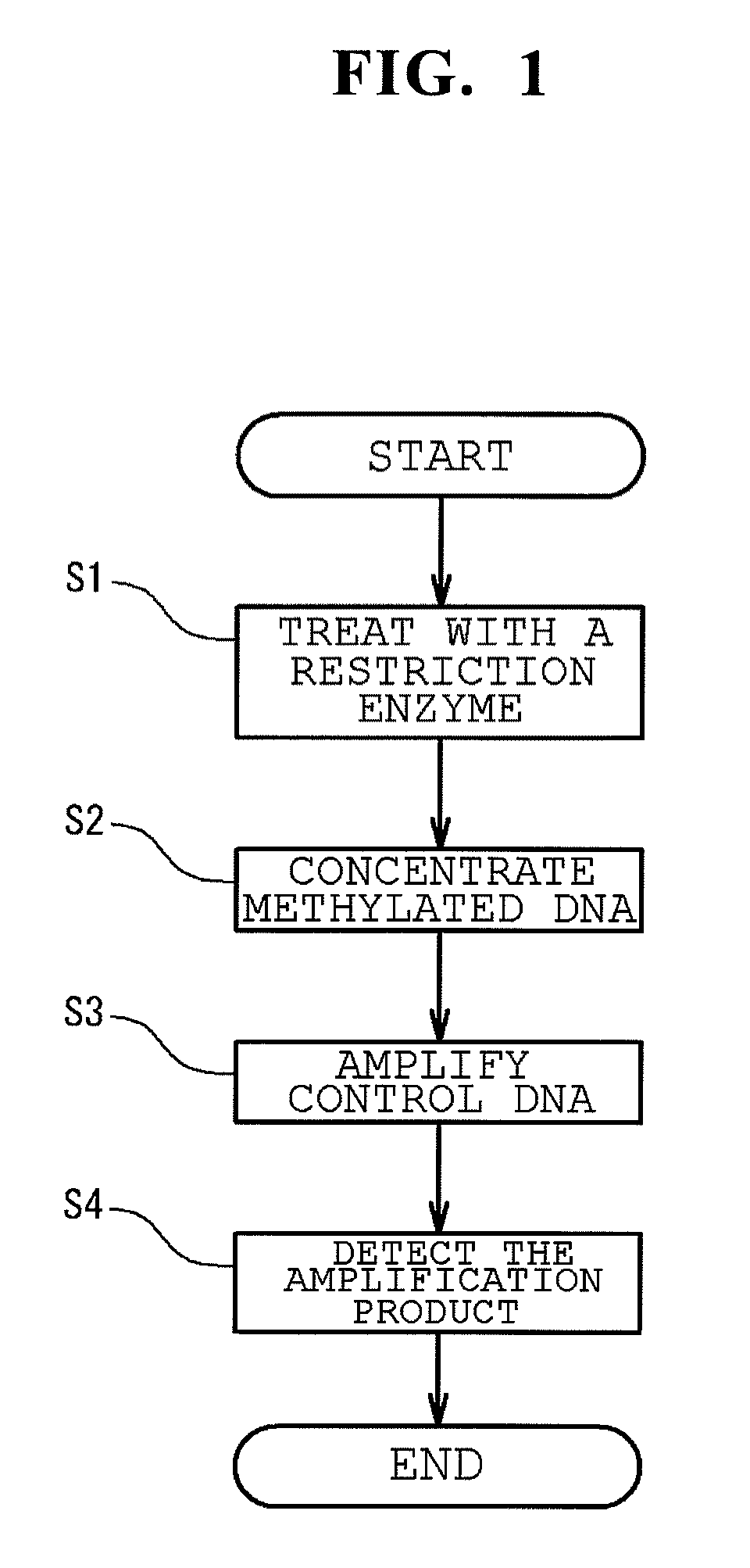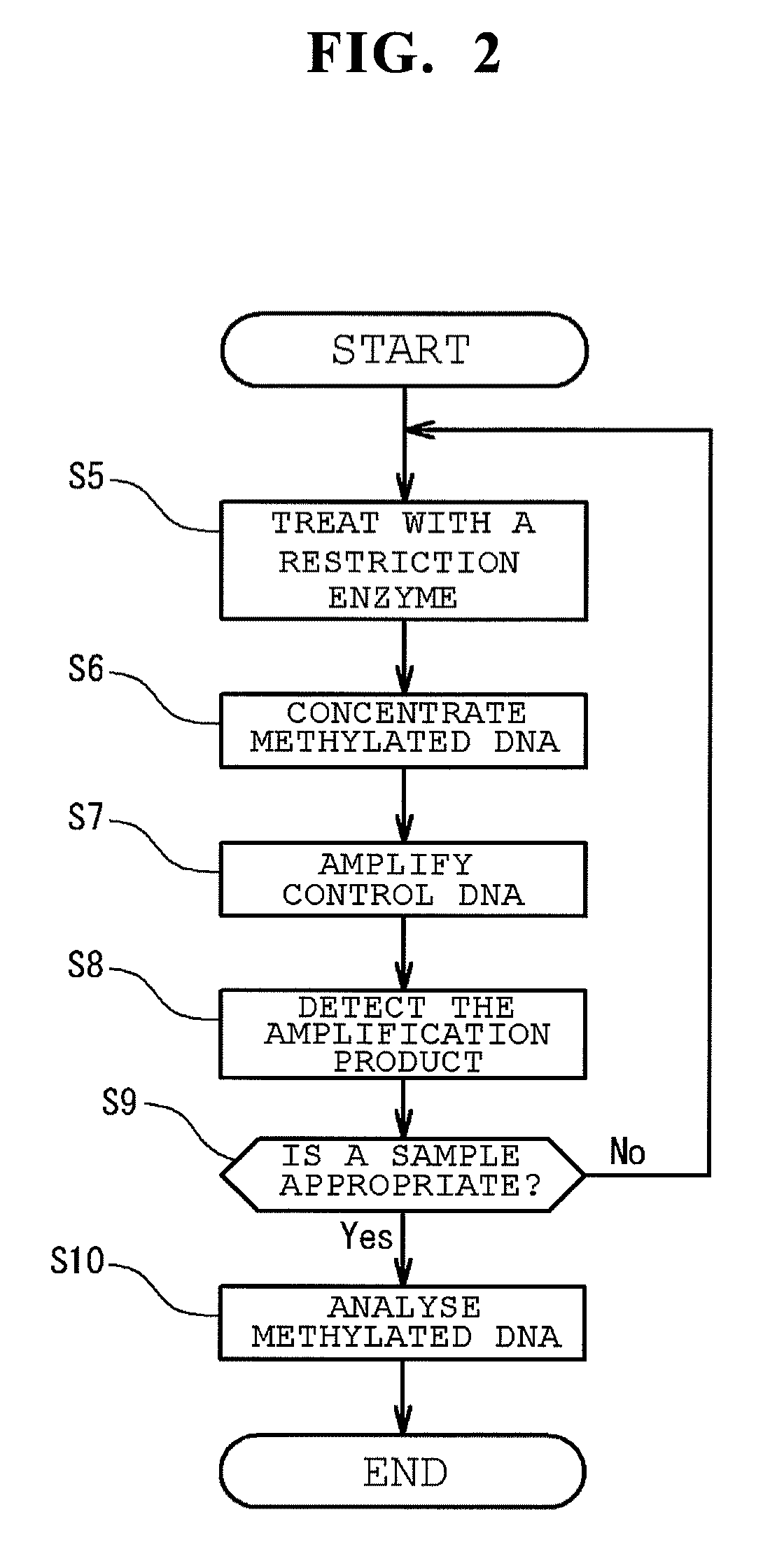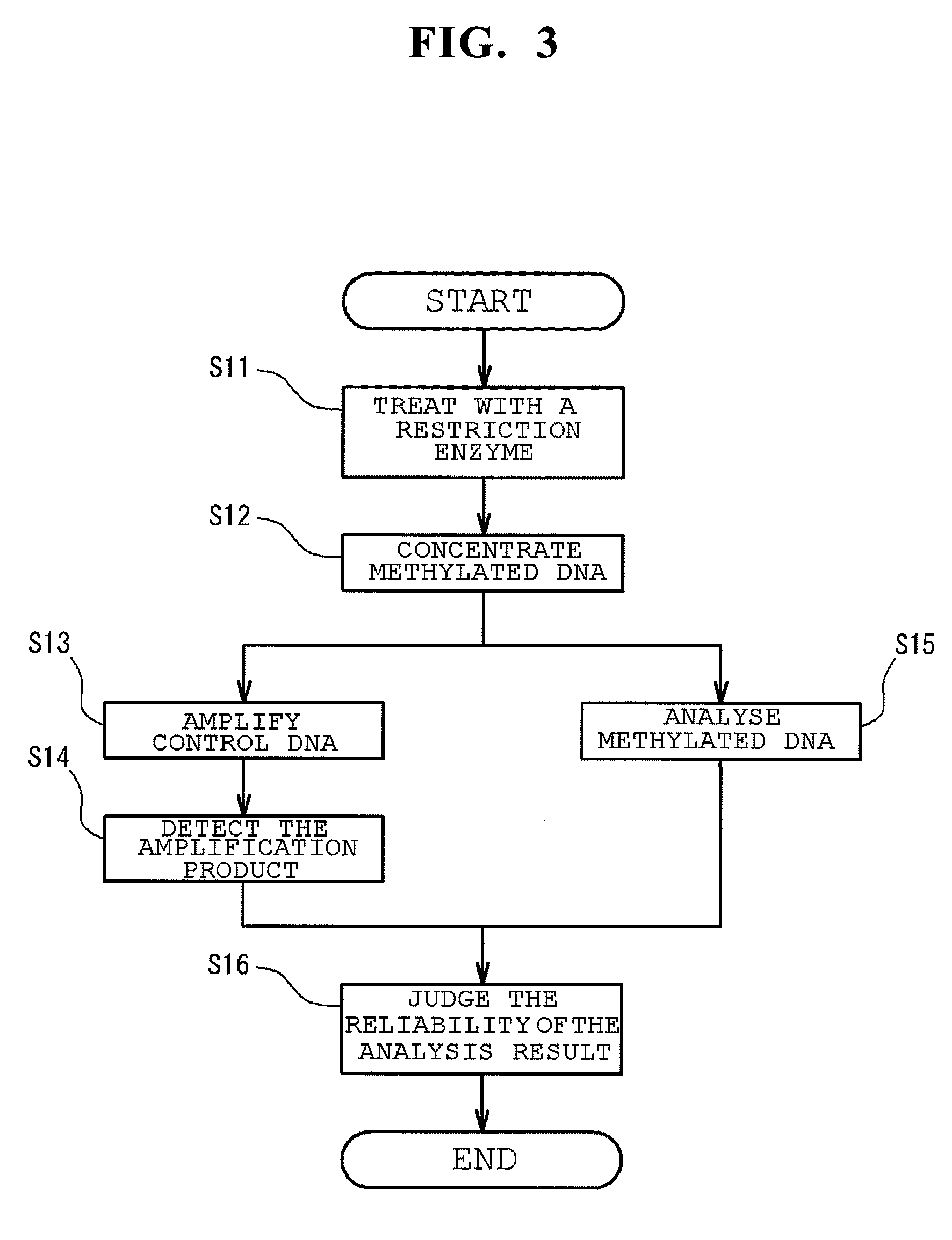Method of analyzing methylated DNA
a methylated dna and dna technology, applied in the field of analyzing methylated dna, can solve the problems of inability to accurately detect non-methylated dna in inability to accurately judge the reliability of the concentrating step, and inability to evaluate the concentration rate and purity of a methylated dna concentrate, etc., to achieve easy and efficient analysis, accurately and easily detect the presence or absen
- Summary
- Abstract
- Description
- Claims
- Application Information
AI Technical Summary
Benefits of technology
Problems solved by technology
Method used
Image
Examples
example 1
Confirmation of Fragmentation of Genomic DNA by Treatment with a Restriction Enzyme
[0102]One μg genomic DNA extracted from breast cancer cell strain MCF7 was incubated with a restriction enzyme at 37° C. for 2 hours to fragment the genomic DNA. The restriction enzyme or a combination of restriction enzymes in a buffer, used in fragmentation of the genomic DNA is as follows:
(1) MseI (manufactured by New England Bio Laboratory) in NEB buffer 2
(2) AluI (manufactured by New England Bio Laboratory) in NEB buffer 2
(3) combination of MseI and AluI in NEB buffer 2
(4) combination of MseI and XbaI (manufactured by New England Bio Laboratory) in NEB buffer 2
(5) combination of AluI and XbaI in NEB buffer 2
[0103]The resulting DNA fragments were subjected to agarose gel electrophoresis to confirm the sizes of the DNA fragments. The results are shown in FIG. 6. FIG. 6 is a photograph showing electrophoresis patterns of the DNA fragments. In FIG. 6, lane 1 shows 1-kb ladder markers; lane 2, the unt...
example 2
Analysis of Methylated DNA of GAPDH Gene
[0105]As a housekeeping gene, a GAPDH gene whose cytosine residues at CpG sites have been estimated to be non-methylated was examined for its methylated state.
[0106]Using a DNA extraction kit (trade name: QIAmp Blood Maxi Kit, manufactured by QIAGEN), genomic DNA was extracted from breast cancer cell strain MCF7. 400 μL of 0.3 M NaOH was added to 2 μg of the resulting genomic DNA followed by incubation at 37° C. for 10 minutes. Then, a product after incubation was treated with sodium hydrogen sulfite by adding 400 μL of 10 M sodium hydrogen sulfite and then incubating the sample at 70° C. for 40 minutes. The DNA contained in the resulting product was purified with a DNA purification kit (trade name: Qiaquick PCR purification kit, manufactured by QIAGEN) to prepare an analytical sample. This analytical sample was subjected to the following PCR.
[0107]0.12 μL of DNA polymerase (trade name: TaKaRa Ex Taq), 1.5 μL of buffer (trade name: 10× Ex Taq ...
example 3
Design of Primers for Detection of Non-Methylated DNA
[0115]A DNA fragment which does not have a CpG site obtained by treating the human genomic DNA with a restriction enzyme MseI was selected based on the nucleotide sequence of the human genomic DNA. As a result, DNA fragments represented by SEQ ID NOS: 1, 2 and 3 were selected.
[0116]Based on the nucleotide sequence of each selected DNA fragment, a primer set was designed for PCR with the DNA fragment as a template. Conditions for designing the primer are as follows:
(1) The difference in Tm between the forward primer and the reverse primer is within 2° C.
(2) The percentage of guanine and cytosine in the nucleotide sequence of the primer is 40 to 60%.
(3) The nucleotide sequence of the primer does not contain 4 or more consecutive guanine residues.
(4) The length of the primer is 17 to 25 bp.
(5) The annealing temperature is set at a temperature near Tm.
[0117]According to the design conditions described above, a primer set 1 using the D...
PUM
| Property | Measurement | Unit |
|---|---|---|
| Tm | aaaaa | aaaaa |
| concentration | aaaaa | aaaaa |
| concentration | aaaaa | aaaaa |
Abstract
Description
Claims
Application Information
 Login to View More
Login to View More - R&D
- Intellectual Property
- Life Sciences
- Materials
- Tech Scout
- Unparalleled Data Quality
- Higher Quality Content
- 60% Fewer Hallucinations
Browse by: Latest US Patents, China's latest patents, Technical Efficacy Thesaurus, Application Domain, Technology Topic, Popular Technical Reports.
© 2025 PatSnap. All rights reserved.Legal|Privacy policy|Modern Slavery Act Transparency Statement|Sitemap|About US| Contact US: help@patsnap.com



